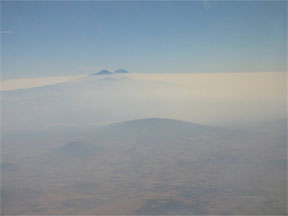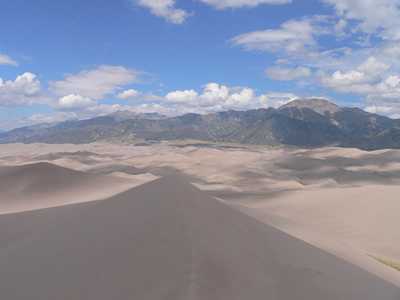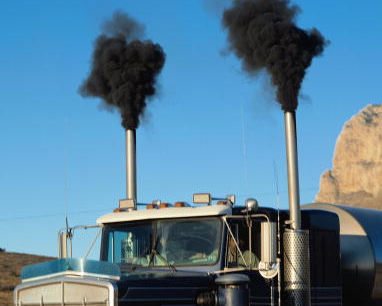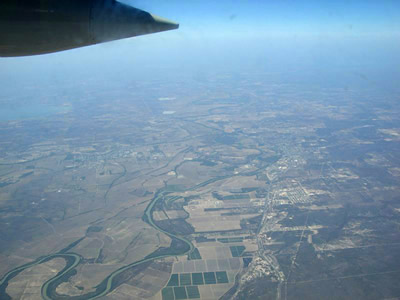Haze near Mexico City photographed from the NSF/NCAR C-130 aircraft in spring, 2006.
Click on image for full size
Image Courtesy of Peter DeCarlo
Aerosols in the Atmosphere: They Are the Same All Around the World
News story originally written on December 10, 2009
It's no secret that the emissions leaving a car tailpipe or factory smokestack affect climate and air quality. But until now, scientists haven't understood where the emissions go or what happens to them in the atmosphere. A group of more than 60 scientists combined their research from around the world to learn more about what happens to aerosols floating through the skies.
Particles from pollution have an effect on cloud formation and rainfall, and they can affect climate. They also affect human health and can lead to illnesses like asthma, heart disease and lung cancer.
Instead of studying the different paths that can happen to these particles, this group of scientists tried to look at them as a whole. They determined that the particles become what they call "particle soup," and the researchers created a chemical map of how the aerosols change once they are part of the soup. What they have learned will allow scientists to be better able to predict climate and air quality.
You might also be interested in:

The climate where you live is called regional climate. It is the average weather in a place over more than thirty years. To describe the regional climate of a place, people often tell what the temperatures
...more
What do smog, acid rain, carbon monoxide, fossil fuel exhausts, and tropospheric ozone have in common? They are all examples of air pollution. Air pollution is not new. As far back as the 13 th century,
...more
When you look up at the sky, you are looking at more than just air. There are also billions of tiny bits of solid and liquid floating in the atmosphere. Those tiny floating particles are called aerosols
...more
A cloud is composed of tiny water droplets or ice crystals that are suspended in the air. A series of processes have to happen in order for these water droplets or ice crystals to form into clouds in the
...more
Rain is precipitation that falls to the Earth in drops of 5mm or more in diameter according to the US National Weather Service. Virga is rain that evaporates before reaching the ground. Raindrops form
...more
The burning of fossil fuels like coal, gas and oil releases particles into the atmosphere. When fossil fuels are not burned completely, they produce black carbon -- otherwise known as soot. Soot looks
...more
Scientists have learned that Mount Hood, Oregon's tallest mountain, has erupted in the past due to the mixing of two different types of magma. "The data will help give us a better road map to what a future
...more















